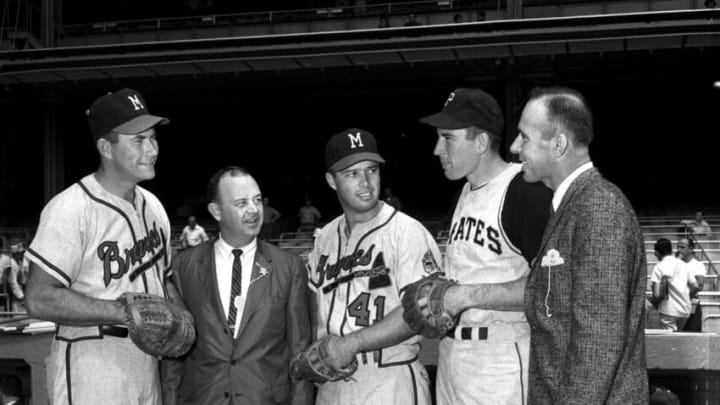
Atlanta Braves Alumni weekend includes the induction of three individuals into the Braves Hall of Fame. Today we remember Joe Adcock.
Fans look at Atlanta Braves sluggers like Austin Riley and marvel at how far he hits the ball, but over the years, many power hitters called the Braves “home”. None of them hit the ball harder, drove it farther, or were more fearless at the plate than Joe Adcock.
Big Joe
Adcock’s SABR biography tells us that his first love was basketball. He attended LSU because he wanted to play basketball and was good enough that he was offered a contract to play pro basketball his junior year.
Adcock was watching the baseball team practice and was drafted onto the team because they were short of players.
"“I’d never worn spikes. I’d never had a uniform. I never played a game with nine men on a side."
He was, however, a quick study and soon became both adept at playing first base and a powerful right-handed hitter, attracting scouts throughout his junior year when he helped the Tigers win the Southeastern Conference championship.
Reds Paul Florence signed him in 1947 and sent him to A-Ball in the Sally League. He was promoted to AA in 1949 and crushed pitching there, batting .298/.347/.485/.832 and hitting 19 homers.
Adcock was 22 when he broke in with the Reds in 1950, but the Reds had a power-hitting first baseman and experimented with Adcock — who had never worn a fielders glove — in the outfield. His defense would have made Marcell Ozuna look like Jason Heyward; it was a disaster, and injuries to Adcock’s knees and legs compounded the problem.
Adcock became an unhappy player, so the Reds decided to move him. In February 1953, the Reds traded Adcock to the Braves in one of the most convoluted deals baseball’s ever seen involving four teams, five players, the Phillies sending money to the Braves… don’t ask.
Adcock settled in as the Milwaukee Braves’ first baseman and set about scaring pitchers and destroying baseballs. According to his SABR biography, Adcock hit his first homer for the Braves off Giants righty Jim Hearn. Remember this… there’s a test later.
His blast landed ten rows up on the left side of the center-field bleachers, 475 feet from home plate: the first ball hit there since the ballpark opened in 1923. This link shows how the ballpark looked at that time.
He followed that with a homer against the Pirates that cleared the 457-foot sign in Forbes Field.
